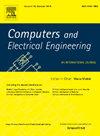MSDAHNet: A multi-scale dual attention hybrid convolution network for breast tumor segmentation
IF 4
3区 计算机科学
Q1 COMPUTER SCIENCE, HARDWARE & ARCHITECTURE
引用次数: 0
Abstract
Accurate breast tumor segmentation is crucial for physicians in breast cancer diagnosis and clinical analysis. To address challenges such as the diversity in tumor size and shape, as well as the indistinct boundaries in breast tumor segmentation, we propose a multi-scale dual attention hybrid convolution network (MSDAHNet). MSDAHNet incorporates a residual dual channel attention module in the encoder and decoder, allowing it to capture essential image features more effectively. In the down-sampling of encoding, both max-pooling and average-pooling are utilized to minimize the loss of fine features. Besides, the network introduces a multi-scale feature pyramid aggregation module and a multi-scale hybrid convolution module to facilitate the integration of important feature mappings and enhance the tumor regions. We conduct experiments using four breast imaging datasets. Specifically, Dice scores of MSDAHNet on BUSBRA, BUET_BUSD, private hospital, and BreaDM datasets are 0.906, 0.842, 0.853, and 0.832, respectively, and Iou scores are 0.841, 0.768, 0.780, and 0.745 for each dataset respectively. The experimental results demonstrate that MSDAHNet outperforms comparing to existing state-of-the-art methods, showing good potential in breast tumor segmentation.
求助全文
约1分钟内获得全文
求助全文
来源期刊

Computers & Electrical Engineering
工程技术-工程:电子与电气
CiteScore
9.20
自引率
7.00%
发文量
661
审稿时长
47 days
期刊介绍:
The impact of computers has nowhere been more revolutionary than in electrical engineering. The design, analysis, and operation of electrical and electronic systems are now dominated by computers, a transformation that has been motivated by the natural ease of interface between computers and electrical systems, and the promise of spectacular improvements in speed and efficiency.
Published since 1973, Computers & Electrical Engineering provides rapid publication of topical research into the integration of computer technology and computational techniques with electrical and electronic systems. The journal publishes papers featuring novel implementations of computers and computational techniques in areas like signal and image processing, high-performance computing, parallel processing, and communications. Special attention will be paid to papers describing innovative architectures, algorithms, and software tools.
 求助内容:
求助内容: 应助结果提醒方式:
应助结果提醒方式:


